Also remember, other than dropping your inside foot which is dangerous and off balance, foot position is not as important as vision (looking through the corner), braking before the corner, hip placement and upper body position. Focus on getting the BIG Picture skills dialed before the smaller picture skills.
What matters with foot position in corners is your goal in that corner. Sometimes your goal is to set an edge, other times it is to pump the corner and gain speed, other times it is to keep the wheels on the ground in a rough corner. I am defining a corner as being approximately 80 degrees of direction change or more. Often on trail there are wiggles (20-75 degree minor changes in direction) when your foot position doesn’t really matter (no need for foot down). The last thing I want a ride doing is thinking on trail, “is this a foot down corner or a foot level corner?” so we teach most riders to focus on dropping your outside foot and most/all of the time you enter a corner where foot down is not required your subconscious “auto-pilot” simply doesn’t drop your foot. Our goal is to get you to understand and do the skills we teach (there is huge difference between understanding and doing! Understanding is worthless if you can’t do!) and for students with limited practice time we have found this is the best way to get them to do (and think less). Rarely will dropping your foot when you didn’t need to hurt you but 100% of the time if your feet stay level when you should of dropped and weighted the outside foot you WILL Slide out!
Short recap, I (and Greg Minnaar) believe that when your goal is to set an edge like a ski racer and corner a full 90% or more at the highest possible speed in a smooth corner you want to drop the outside foot and put 100% of your weight on that foot. Doing this gives you; more traction, a lower center of mass, 155-175 mm of leverage, easier separation from bike when big lean angle is necessary and more leverage using your skeletal structure for support instead of your muscles (to fight the G-forces in a corner).
I have been told by so many riders, racers and students that you keep your feet level in berms! Again it depends on your goal, berms have little to do with foot position. If your goal is dig the tires into the berm for maximum grip at max speed you are going to drop and put 100% of your weight on that outside pedal, like Greg Minnaar in the photo squence above (which, when we shifted our focus to pumping corners Greg entered the berm slow enough to not worry about traction, kept his feet level and he gain an amazing amount of speed!). If you are going slow enough that you want to pump the corner and gain speed (which means you obviously aren’t worried about sliding out) you will keep you feet level.
Much of the time, when you are on twisty trails with a lot of 50- approximately 79 degree “bends” you goal is to keep equal weight on each pedal and stay fluidly in balance (feet are level to the ground but outside foot moving “down” in relation ship to your bottom bracket). Also, in rocky, rooty or braked bumped corners where your goal isn’t to set an edge but to keep the wheels on the ground you will corner feet level. Again, there is no time to think on the trail so with enough drills this will become second nature, switching from foot down to feet level hundreds of times in a ride. Watch Danny Hart in this sick run alternate between the foot down and foot level in the corners on his World Championship winning run below. At 21 seconds in (1:27.4 on the freecaster clock on screen), 41 seconds in and 50 seconds in (1:56.3 on freecasters clock on screen) Danny plants the outside foot for maximum traction. On quite a few other corners he is foot level.
Some examples. Saturday I rode the McKenzie River Trail and since it basically follows a river there weren’t to many full 90 degree corners so for at least a minute on one descent I realized that my feet were level through 8-10 “turns” then, a very high speed a 100 degree left turn appeared and I dropped that outside and railed the turn. On Sunday I rode the Alpine trail in Oakridge, OR which had many more 90 degree high speed corners so I was dropping my outside foot way more than I was on Saturday on the straighter trail.
Learning to corner feet level AND foot down is important to reaching your best as a rider. There is no one way for all corners but there is definitely a better way for each individual corner.
Next week, part 3 the advantages and disadvantages of riding switchfoot (switching which foot is forward in corners) for cornering.
We spend three hours on cornering in our camps! This is a lot of information and it is much easier to explain, demonstrate and have you practice it in person than over the web! This is meant to be brief and to the point, not every bit of cornering information I have.

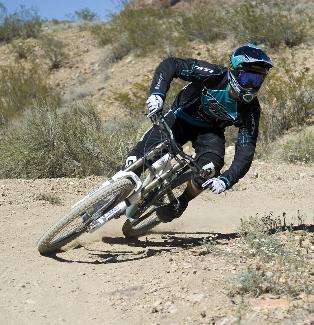
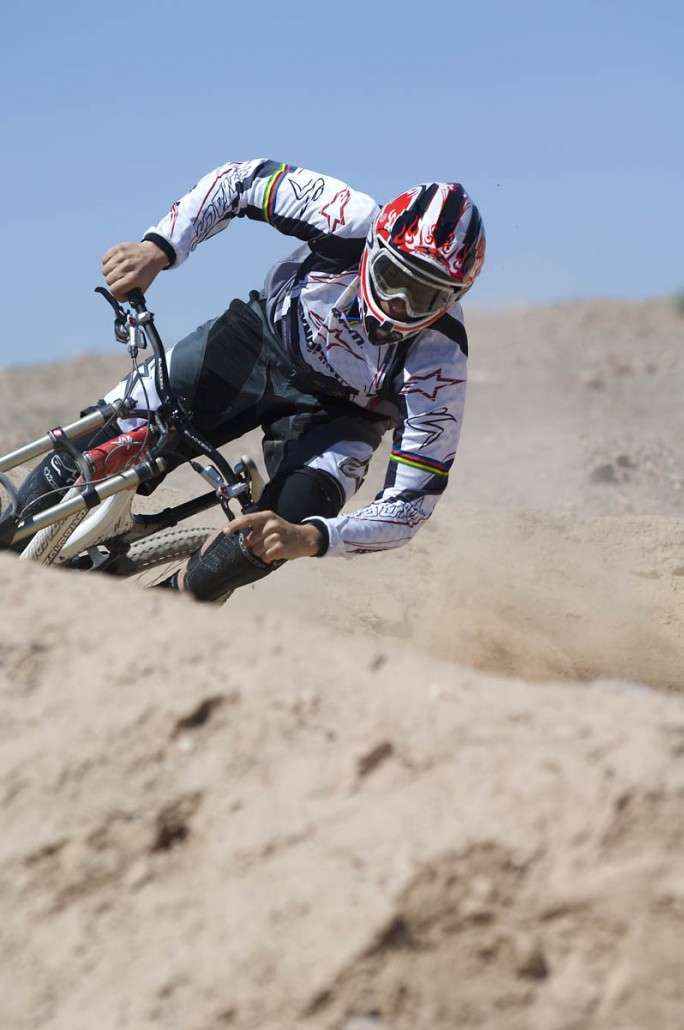
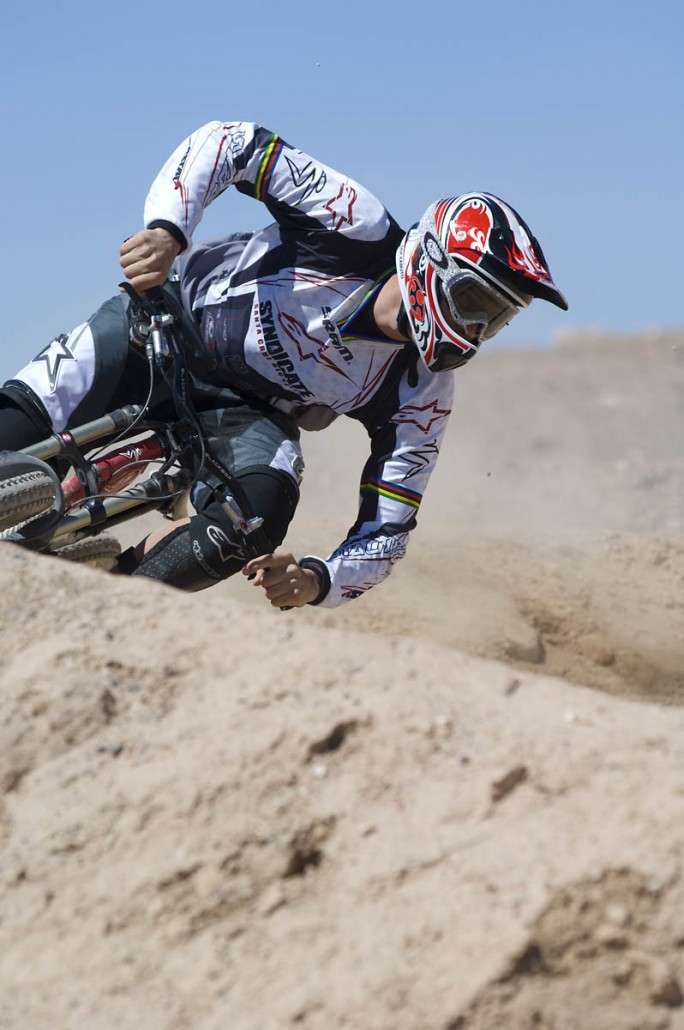
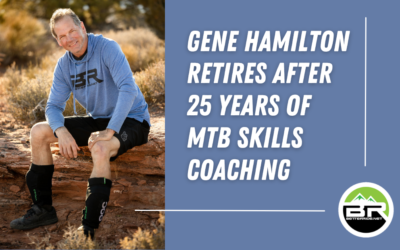
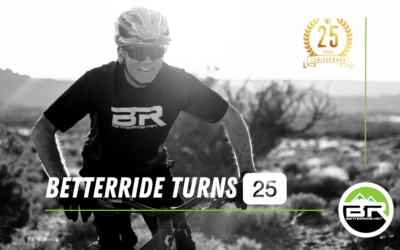
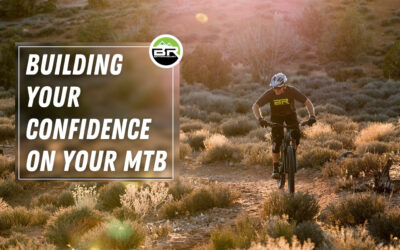
Gene, please don’t sanitize your opinions like some folks are calling for. You ruffled my feathers, and your response to my email prompted me to sign up for a clinic. And that clinic has me riding better.
“Learning to corner feet level AND foot down is important to reaching your best as a rider. There is no one way for all corners but there is definitely a better way for each individual corner.”
This is the primary distinction between your position (and I believe to be the correct one) and the position of “always have your feet level” which is a poor attempt at a “one size fits all” approach to proper cornering. It is much easier to build good technique by over-doing or exaggerating a motion and adjusting from there as opposed to doing a minimum and attempting to build on it.
I have taken a course with Shaums March and while he preaches having your feel level, by that he means level relative to the ground and relative to your lean angle, so not actually level at all times. He believes in being perfectly balance on the bike at all times, which I have to say taught me a lot and improved my riding. So the feet level position can be having your outside foot at 5 o’clock while the inside is at 1 o’clock, and not perfectly level such as when trying to pump a turn, or at any other position that is balance relative to the lean angle and type of corner. With that said, I believe some have misunderstood that part of Shaums coaching. So if taking a corner and the lean angle is mild, I will have my feet pretty level and as the lean angle increases I lower my outside foot more in coordination with the lean angle and grip levels. If I need to set an edge, my outside foot has all my weight on it, for example. With that said, I would not take Shaums course again because there is no real structure to his course aside from some basics, and the class dictates what they want to learn and what he teaches, in my case everyone wanted to jump and it turned into a jump competition, and he never went into advanced techniques like pumping a turn. I wished BetterRide had not cancelled one of their clinics that I was signed up for, which led me to take Shaums course after riding with him previously because I already had the weekend planned and he had a camp scheduled (met him at the trails while he was teaching a camp and I was vacationing). I do believed in BetterRide’s coaching from their articles and put into practiced, helping me improve further. I look forward to taking a camp in the near future with BetterRide.
Gene,
I noticed when paying attention to this on the bike this morning that unless my inside foot is high it’s pretty difficult to “Turn my hips in the direction of the turn” and separate from the bike as you and Dylan taught me when I took your MTB skills class. I don’t really think about where my feet are, but if I do all the other things, my inside foot naturally comes up as I apply counter pressure and the bike leans and I transfer my weight onto the outside pedal. I corner faster and feel much more in control when I apply what I learnt in your camp.
Thanks
Mark